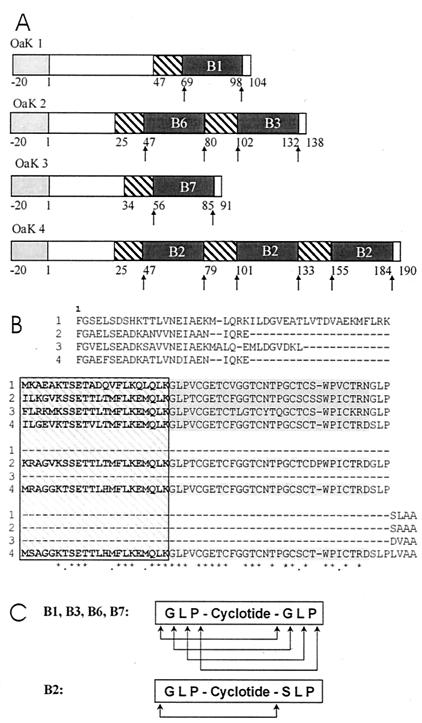Figure 2.
(A) Block diagram of the precursor proteins predicted from the Oak1, 2, 3, and 4 clones showing the signal peptide (light shading), the regions corresponding to the mature kalata peptides (dark shading), the region of 22 aa on the N-terminal side of the kalata peptide sequence (N-T repeat, hatched). (B) Alignment of the amino acid sequence of the proteins encoded by the Oak1–Oak4 clones (labeled 1–4, respectively). The sequence begins with the first amino acid after the signal peptide. The N-T repeat sequences are boxed and hatched. The kalata sequences are shaded. Identical amino acids in the N-T repeat and kalata sequences are marked with an asterisk, and similar amino acids are marked with a dot. Gaps (−) were introduced to maximize the alignment. (C) The potential processing sites. The mature cyclic peptide retains one copy of the Gly-Leu-Pro sequence that could be derived entirely from one of the two flanking elements or partially from both depending on the initial cleavage sites for B1, B3, B6, and B7. The retention of Gly-Leu-Pro in the B2 cyclotide suggests cleavage before the Gly and Ser residues.

